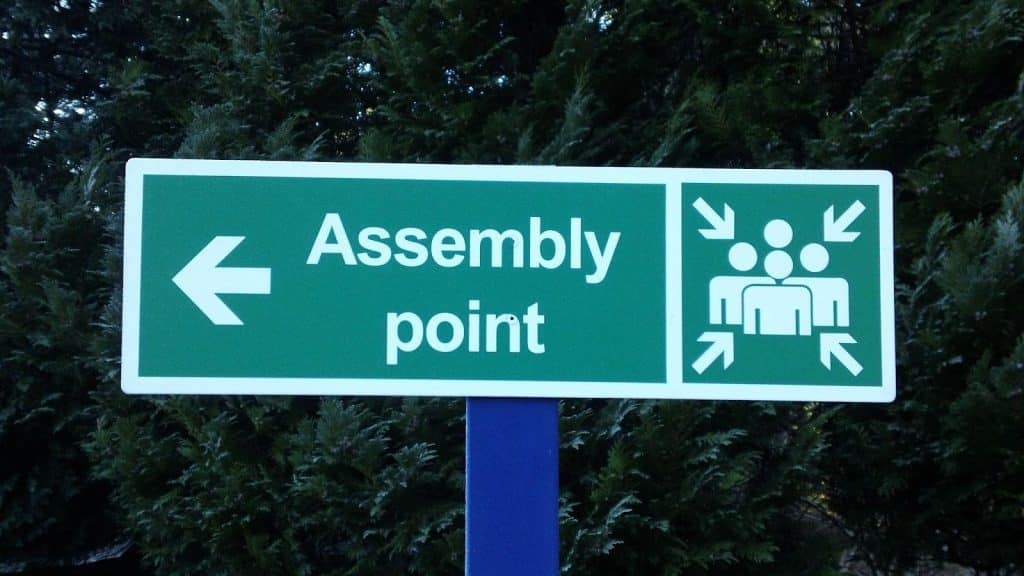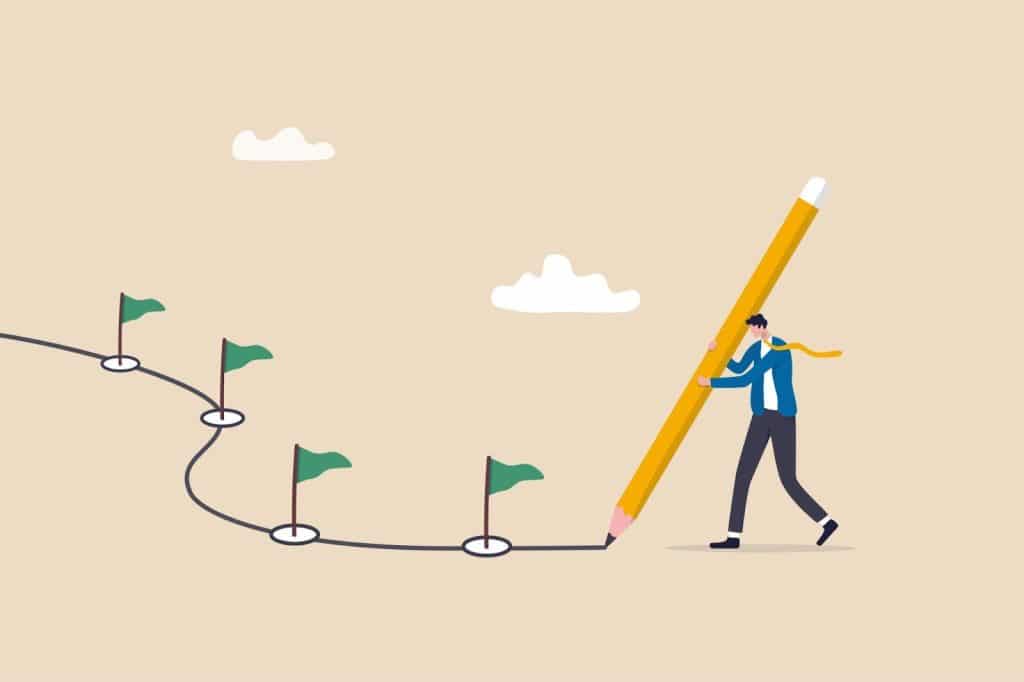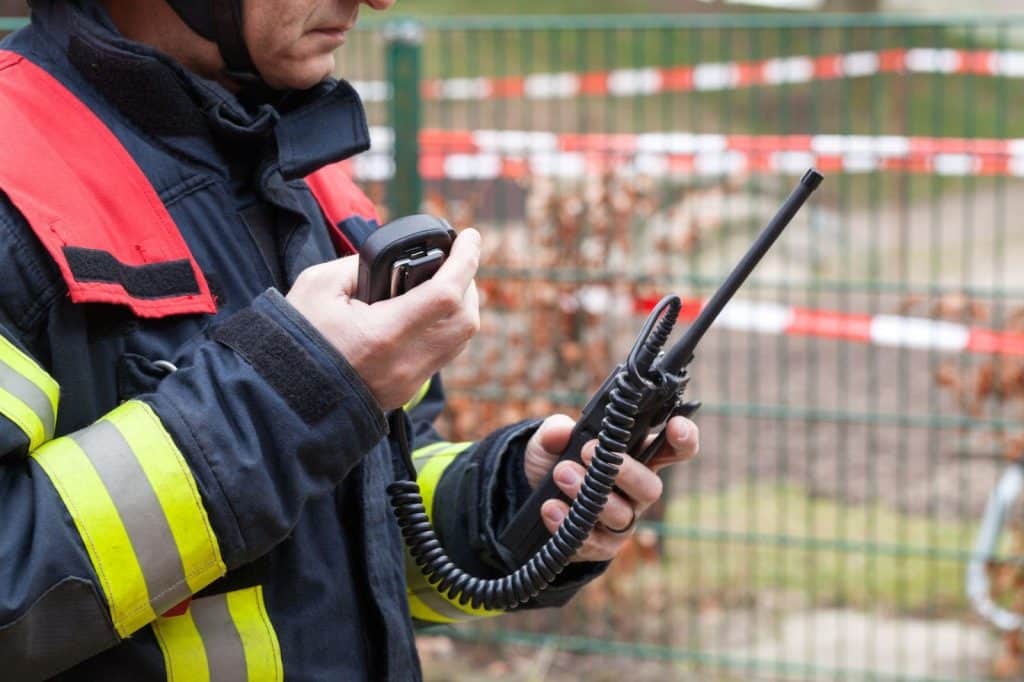
An effective fire drill saves lives, as do appropriate training and rehearsal. Fires are nothing to joke about. More than 200 lose their lives yearly to fire and explosions at work in the US alone. However, to ensure compliance, you must write a fire drill procedure to include in your health and safety plans. Similarly, you will need to train your team members on this endeavor.
A fire drill procedure is a written document that describes how your team will conduct a fire drill. The document should include instructions suitable for your organization’s facilities and operations. Still, there are a few standards to follow, which we will have in this guide.
Making A Fire Drill Procedure – A Step-By-Step Guide

We have established a nine-step process to help you create a robust fire drill procedure. Remember that this outline is an intermediary and that yours will include factors specific to your situation, operations, and regional regulations. However, these steps will apply to you regardless, so let’s get started.
Establish Operational Parameters

They say that the beginning is the best place to start, and I agree. Let’s start by making a few points about how your operations function, specific dangers, and other pertinent information. If you don’t have any thoughts, try starting with your industry and work environments.
Does your team work in an office? What are the dangers?
Does your team service multiple locations? Is each location the same layout?
What dangers exist in each work environment that could cause a fire?
These are a few questions you need to answer, but the idea is to get a real sense of what your operations expose staff to in terms of potential fires.
Consult With Local Authorities

Consulting with local authorities is one of the most critical stages of the fire drill procedure creation. You can find out all sorts of information from local authorities, including:
- Fire response times
- Fire response types available locally
- Specific regulations for fire prevention, building codes, and other regional specifications
Produce Facility Floor Plans

By this step, you should have established your operational parameters and hazards that might cause a fire. Similarly, it would be best if you had a good idea of established local fire and building safety regulations in a workplace. Now, you need to produce floor plans for each area where you have a fire exit. In other words, you need to review the facility layout and floor plans to establish the most appropriate escape routes for each area of your facility. Remember that the shortest distance from a workstation to a fire exit is the preferred path.
Most workplaces require a minimum of two fire exits to serve the team. These exits must have specific characteristics, like a lit fire exit sign, a clear means of passage without obstructions (no boxes stacked in front of the fire exits, for example), and a self-closing function, among other things. Check out our inspection guide for fire exits for further information.
Each area or region of your facility should have its individual fire escape sub-plan and map. So, you need to establish these regions and ensure you have duplicate copies of the floor plans so you can create the escape routes and exit maps required.
Outline Escape Routes and Gathering Locations

Most regions have building and fire code regulations and requirements that include posting an escape route map in each area of a work environment. So, for this step, you need to take those floor plans you duplicated, assign the specific regions of the work environment, and establish the route through the work area to the particular fire exit.
Many organizations stop at this point regarding the map. However, I think it is pertinent to expand the map to include an external route to a designated meeting point. The designated meeting points for each area usually measure a minimum of 50 feet from the building. Ideally, if your work has significant flammables, then it’s wise to increase that distance accordingly for team safety.
Delegate Responsibilities and Operational Changes (Add To SOPs)

Assuming that you have completed each step thus far, we need to consider that at this point, we would have a bunch of people, potentially in different meeting points. We must control and account for everyone to ensure no one is left behind. Here’s where things might seem complicated, but it’s not so difficult to manage if we break things down. Here’s a simple rule: Apply a number (like 25) to your organization.
Here’s how it works:
Let’s say you run a facility of 300 people. The facility floor plans break it down into six regions based on the nearest fire exits. That works to about 50 people per fire exit, assuming things divide reasonably well.
So, you could designate about two people per region: One to account for 25 others.
The idea is to have a team leader of sorts in each region. That team leader will have a list of all the team members in their area and do a head count.
Finally, each team leader will report to a master headcount person responsible for ensuring all regional team leaders account for their teams.
As you delegate head count responsibilities to particular roles within your organization, you must ensure they are aware of and accept their new responsibilities. Similarly, it would be best if you added any of these responsibilities to the associated Standard Operating Procedures provided to your team for their individual roles. And thus, we arrive at our next step: training.
Supply Appropriate Training

Each member of your team needs training appropriate to the role they must play in a fire drill scenario. Team leaders responsible for counting their area’s team members (to ensure everyone is present at the designated meeting point) will require guidance to ensure they know the proper procedure. Perhaps you have created a custom checklist for your team’s head counts. Either way, if you decide to manage the situation, you’ll need to train every team member accordingly. That includes providing training for scenarios that team members might encounter, such as what to do if a fire alarm activates when they are outside of their normal work area.
Appropriate training means more than merely training team members on where to go should make a fire alarm sound. It includes the proper training for fire extinguisher use, risk identification, and hazard prevention. With appropriate training, your fire drills will never need to happen for any reason other than practice. That is the goal; although life has a way of wrecking the best-made plans, all we can do is prepare our best. That preparation comes with practice.
Schedule Practice Drills (And Unscheduled Drills)

A quick review of what you have accomplished this far will show you’re just about ready to start running fire drills. Each member will know their part and where to meet should they encounter a fire scenario when outside of their regular department. Each region should have posted fire escape plans in a conspicuous location and have appropriate fire exits (including clear paths to each). It’s time to schedule your first fire drill!
The best way to start fire drill rehearsal is with an organized and scheduled approach. It doesn’t hurt to do this for the first few rehearsals as long as the time between rehearsals is not extensive.
Once your organization understands the fire drill procedures, you need to schedule secret fire drills. That is, only a chosen top few managers should know if any. The more people who don’t know the fire drill schedule, the more realistic the response.
Document and Modify Accordingly

Have you ever witnessed a real-life fire drill? If you have, you may have noticed that someone usually records the time. In fact, it’s essential to know how long your team takes to perform the evacuation drill. Response time is critical in the event of a fire. Fire moves ridiculously fast, much faster than people generally think. We’re talking about a small flame becoming a blazing inferno in only 30 seconds. That’s not a lot of time for escape, so you will want to ensure that the fire drill evacuation time recording is essential and accurate.
With time, you may notice trends with the time documented for each fire drill rehearsal. You will likely notice a difference in time between the scheduled fire drills everyone knew about and those everyone didn’t know about. Each fire drill rehearsal will reveal different things about your organization and the fire drill process. You need to assess the data you have gathered from previous fire drills and see how you can optimize the process to ensure greater safety and effectiveness.
Reward And Promote

Most of the time, people think their job is done when the fire drill completes successfully. However, if you really want effective and efficient fire drills, you need one thing above all else: team buy-in.
Creating a little competition between departments is not necessarily a bad idea. See if you can get your team to play along, where they have their objectives (and no running) to orderly leave the facility and gather at their designated meeting locations. Suppose you can get departments to have a little friendly competition to see which can orderly evacuate the fastest. Sometimes a little competition works quite well to get team buy-in.
Above all else, you need to foster an environment of safety and team playing. A team that works well together will work well to evacuate together. So, it would be best if you did what you could to have buy-in from everyone. One of the best ways to get team members to buy in for scenarios like fire drills is to provide a simple and straightforward solution to each role’s responsibilities. And, wouldn’t you know it, we’ve created an app for managing any kind of emergency and incident reporting or inspection documentation, including checklists for fire drills, fire exit inspections, and more. Let me introduce you to the 1st Reporting app.
Solutions For Fire Drill Documentation Management

At 1st Reporting, we understand that you need to capture and report data, manage and collaborate with team members and still can review and summarize data easily. Summarizing multiple reports is a challenge unless you’ve got a robust system like 1st in your corner.
Our application is built with your health and safety reporting and management in mind. The app can handle companies of any size. You can easily establish and set up teams within your organization – designating each of their forms and checklists. For example, you could create custom headcount checklists for each region of your facility and appoint team leaders, providing each with their custom headcount checklist. It’s easy to get buy-in when you provide tools like the 1st Reporting app for your team.
Similarly, the application gives your team easy access to a custom database you can create. Any in-house training is easy to input into the app so that you can provide your team with access anytime. The powerful offline mode will let your team access uploaded materials and capture your team member’s inputs into the app. That way, if your team is out of phone signal areas, the data they capture on their smartphone’s reports within 1st won’t go missing. In fact, they will upload at the next opportunity, keeping your organization’s data safe and secure on the cloud.
Although we’ve created a library of downloadable templates and forms for your organization, we’ve got the same forms, digitally created, within our application. So, you can easily integrate a digital solution to replace your existing, albeit archaic, use of paper forms. Take a look at a few of the features:
- Custom Form Builder – In case one of our standard templates doesn’t quite do it for you, it’s easy to customize or even create your form from scratch with our custom form builder, standard in our application for admin users.
- Custom Notifications – Paper forms can never send an instant notification to a designated supervisor when a specific team member completes a report – but our app can.
- Digital Media Friendly – With the 1st Reporting application, your team can easily upload audio, photos, and even videos to the platform to include in a report. This feature allows easy documentation of property damage, vehicle accidents, and much more, all with just a click of a few buttons.
- GPS & Mapview – Managing reports with a custom map view screen is easy with 1st. It’s simple to pull up a map view of your choice and see where each report creation submission occurred via the Global Position System integration built-in into our application.
- Teams® Integration – If you’re one of the many teams that use Microsoft Teams®, then you can take advantage of how our application works seamlessly with the Teams® environment. That way, you can receive your custom notifications right inside Teams®.
Please don’t take my word on the 1st Reporting app’s effectiveness and convenience. It would be best if you tested it for yourself.



